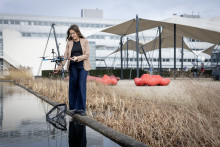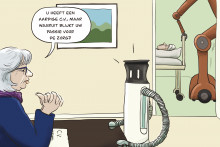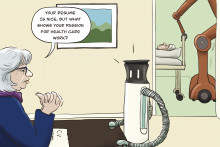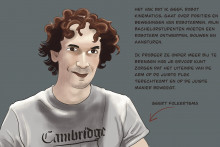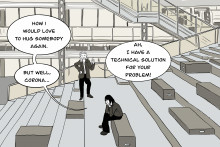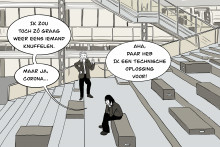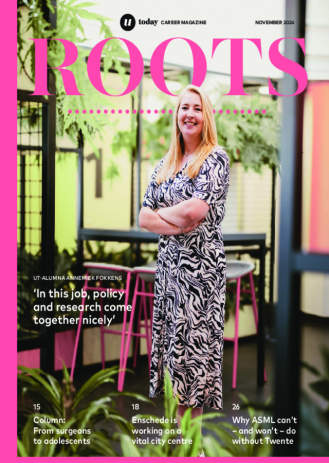The ultimate goal of the Flyflic (FLYing companion for Floating LItter Collection) project is to contribute to solving a global challenge of plastic pollution in our waterways. ‘It’s a small part of a large effort to solve this big problem, but it’s a necessary part,’ says Chiara Gabellieri, Assistant Professor in the Robotics and Mechatronics group at the University of Twente.
Plastics that accumulate in our oceans mostly come from rivers and other freshwater ways, explains Gabellieri. ‘By collecting this waste in rivers and canals, we prevent it from reaching the ocean, but we also prevent pollution of the waterways which are especially abundant in the Netherlands. Plastic releases potentially harmful substances that can threaten the ecosystem. It can then reach our drinking water and food. Not to mention that animals can get stuck in the litter, and that there is visible pollution, which hinders our enjoyment of the waterways.’
Flexible solution
The UT researcher therefore started thinking of new methods to ‘clean up’ rivers. After considering all the existing solutions and their limitations, she decided to focus on aerial robots. ‘Our approach is a novelty,’ says Gabellieri. ‘There are other solutions for collecting litter, but they all have blind spots – blind spots which our robot can solve.’
(Text continues below the photo.)

Currently, boat-like robots and fixed trapping mechanisms are used for collecting litter in freshwater ways, but those cannot be used everywhere. ‘They cannot be deployed in non-navigable spots, such as dams and low bridges,’ explains Gabellieri. ‘A flying robot, however, can reach essentially any site. It’s very flexible. It can go to places that are difficult or even dangerous to access. It is also quite cost effective, because drones are relatively cheap and can be used for more than one purpose.’
Proof of concept
To picture the robot, imagine a quadrotor, a type of a drone with four rotors, equipped with a net for collecting objects. Although simple in its form, this solution seems to be effective. ‘We have been successfully able to test our proof of concept here at the UT. In fact, we tested it in the streams and ponds on the campus, and it worked well,’ says Gabellieri. ‘This prototype, however, was operated by an experienced pilot.’
The latest prototype is already capable of autonomous litter collection, adds the UT scientist. ‘Thanks to our collaboration with the University of Zagreb, the robot is equipped with a camera, aided by artificial intelligence – a neural network trained to recognize litter. We have achieved autonomous collecting of litter, but only in a controlled environment. The next step is to deploy several robots, and to test them outdoors.’
The Flyflic project is officially ending this year, but the development of the aerial robot is still at the beginning, says Chiara Gabellieri. ‘Modeling and controlling aerial soft robotic systems immersed in fluids is an open research problem. There are still many scientific challenges to address, and so I hope we will be able to continue the research. Of course, it is not the ultimate solution to the global challenge of plastic pollution, but it has advantages other methods don’t have.’



